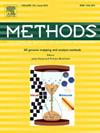A prognostic gene signature and subtype-specific drug sensitivity in TNBC revealed by single-cell and bulk RNA sequencing: Insights into stemness and tumor heterogeneity
IF 4.3
3区 生物学
Q1 BIOCHEMICAL RESEARCH METHODS
引用次数: 0
Abstract
Triple-negative breast cancer (TNBC) remains one of the most aggressive Triple-negative breast cancer (TNBC) remains one of the most aggressive and therapeutically challenging breast cancer subtypes, largely due to its lack of targetable receptors and its intrinsic chemoresistance. In this study, we applied an integrative multi-omics approach − combining single-cell RNA sequencing (scRNA-seq) with bulk transcriptomic, epigenomic, and mutational analyses, to investigate the cellular heterogeneity and underlying mechanisms of drug resistance in TNBC. Analysis of the scRNA-seq dataset (GSE176078) revealed a complex tumor microenvironment with a highly plastic cancer epithelial subpopulation (Cluster C4) exhibiting elevated multipotency and distinct intercellular communication patterns. Concurrently, unsupervised clustering of TCGA-BRCA data delineated three molecular subtypes (CS1, CS2, and CS3) with unique biological and metabolic profiles, where CS3 notably exhibited unique molecular features associated with chromatin remodeling and high proliferative activity, suggesting distinct therapeutic vulnerabilities. An overlap analysis between scRNA-seq and bulk RNA-seq data identified 220 common differentially expressed genes (DEGs), from which a four-gene prognostic signature (CTSF, GBP1, BCL2A1, and EMP1) was derived. This signature robustly stratified patients by overall survival across both internal and external cohorts. Overall, our findings provide critical insights into the molecular drivers of chemoresistance in TNBC and offer a foundation for personalized therapeutic strategies.

单细胞和大量RNA测序揭示了TNBC的预后基因特征和亚型特异性药物敏感性:对干细胞和肿瘤异质性的见解
三阴性乳腺癌(TNBC)仍然是最具侵袭性和治疗挑战性的乳腺癌亚型之一,主要是由于其缺乏靶向受体和内在的化疗耐药。在这项研究中,我们采用了综合多组学方法-将单细胞RNA测序(scRNA-seq)与大量转录组学、表观基因组学和突变分析相结合,研究TNBC的细胞异质性和潜在的耐药机制。对scRNA-seq数据集(GSE176078)的分析揭示了一个复杂的肿瘤微环境,具有高度可塑性的癌症上皮亚群(C4簇),表现出更高的多能性和不同的细胞间通讯模式。同时,TCGA-BRCA数据的无监督聚类描绘了具有独特生物学和代谢谱的三种分子亚型(CS1、CS2和CS3),其中CS3明显表现出与染色质重塑和高增殖活性相关的独特分子特征,表明不同的治疗脆弱性。scRNA-seq和大量RNA-seq数据之间的重叠分析确定了220个常见差异表达基因(deg),从中衍生出四基因预后特征(CTSF, GBP1, BCL2A1和EMP1)。这一特征通过内部和外部队列的总生存率对患者进行了有力的分层。总的来说,我们的研究结果为TNBC化疗耐药的分子驱动因素提供了重要的见解,并为个性化治疗策略提供了基础。
本文章由计算机程序翻译,如有差异,请以英文原文为准。
求助全文
约1分钟内获得全文
求助全文
来源期刊

Methods
生物-生化研究方法
CiteScore
9.80
自引率
2.10%
发文量
222
审稿时长
11.3 weeks
期刊介绍:
Methods focuses on rapidly developing techniques in the experimental biological and medical sciences.
Each topical issue, organized by a guest editor who is an expert in the area covered, consists solely of invited quality articles by specialist authors, many of them reviews. Issues are devoted to specific technical approaches with emphasis on clear detailed descriptions of protocols that allow them to be reproduced easily. The background information provided enables researchers to understand the principles underlying the methods; other helpful sections include comparisons of alternative methods giving the advantages and disadvantages of particular methods, guidance on avoiding potential pitfalls, and suggestions for troubleshooting.
 求助内容:
求助内容: 应助结果提醒方式:
应助结果提醒方式:


